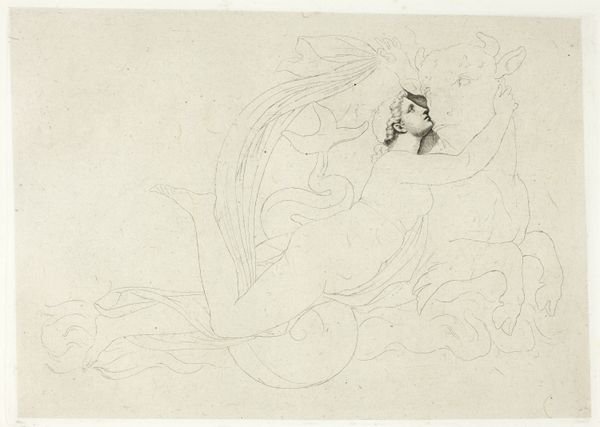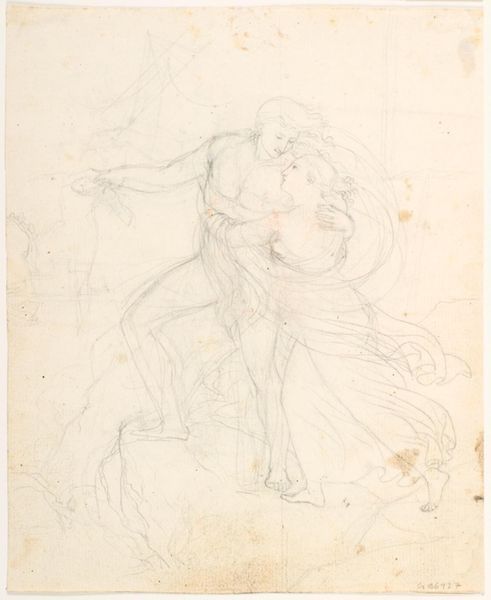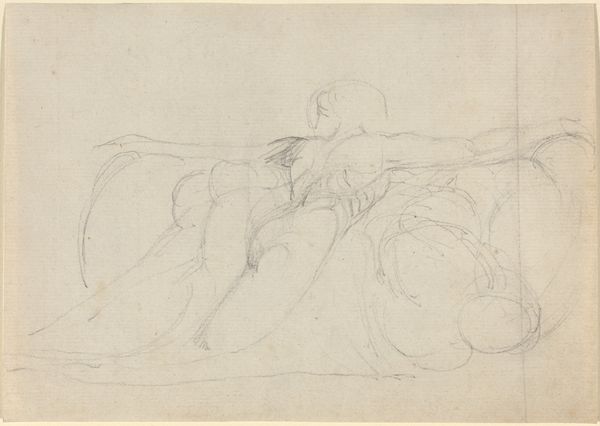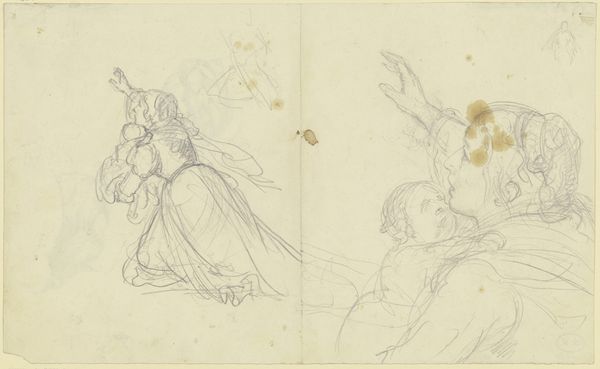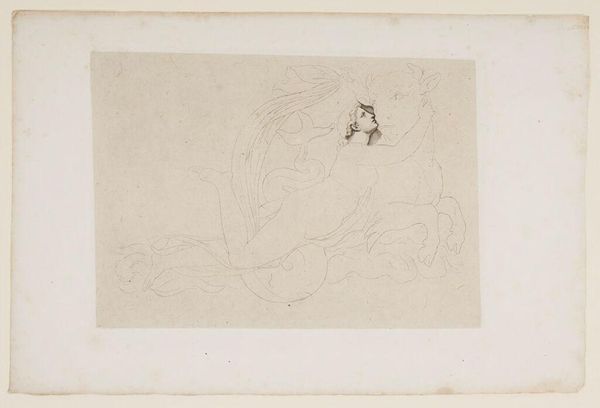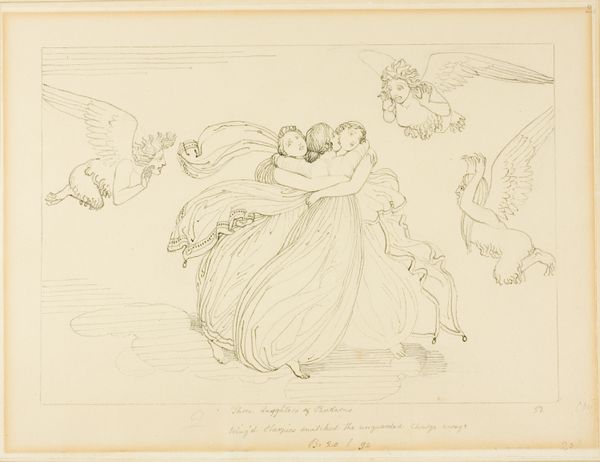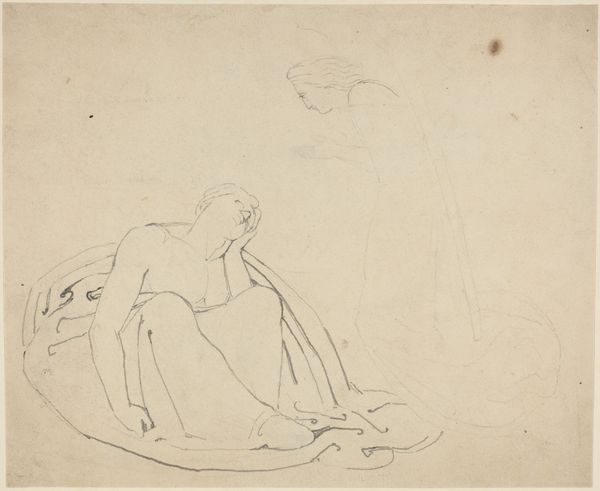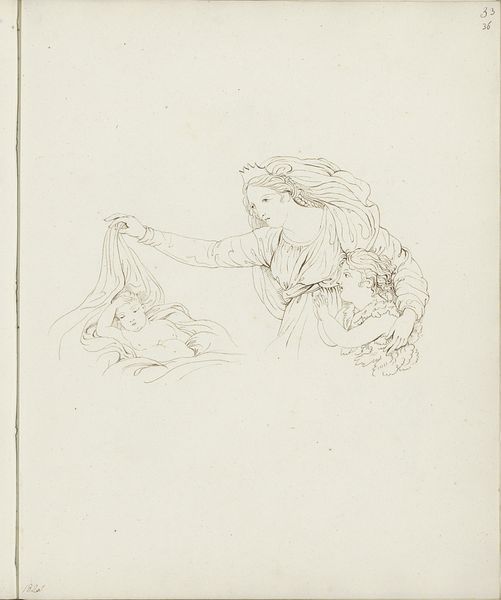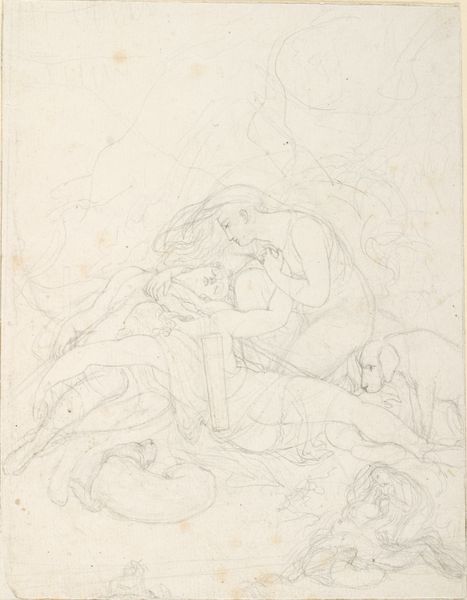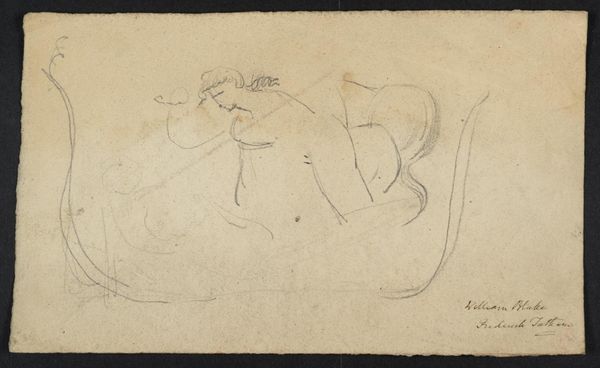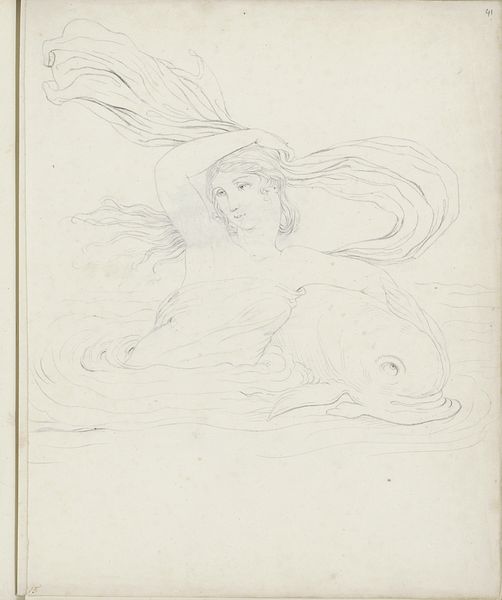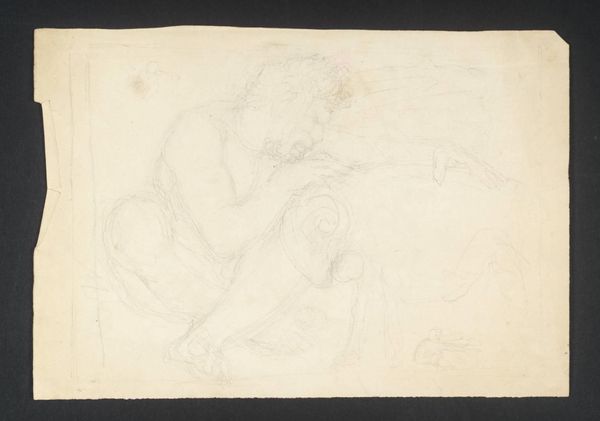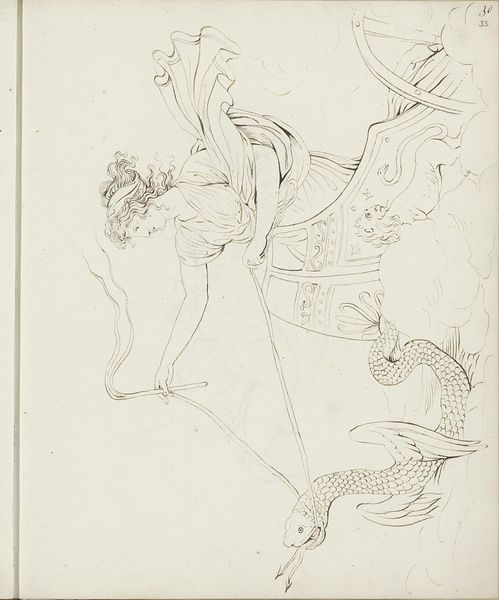
drawing, print, etching, paper, pencil
#
drawing
#
neoclacissism
#
allegory
# print
#
etching
#
figuration
#
paper
#
pencil
#
history-painting
Dimensions: 135 × 180 mm (image/plate/sheet)
Copyright: Public Domain
Art Historian: Here, we have Pierre-Paul Prud'hon's drawing, "Rape of Europa," housed right here at the Art Institute of Chicago. It’s rendered in pencil and etching, a preparatory study, one might guess, given the somewhat unfinished quality. Artist: My first impression? Ethereal, definitely, but unsettling. It's so light, almost ghostly, yet the story itself is rather violent, isn’t it? It has this weird push and pull, a delicacy masking something darker. Art Historian: Precisely. The delicacy, I suspect, softens the narrative. Europa is not resisting—in fact, she’s embracing the bull. Remember, Zeus has transformed himself. The bull as a symbol has many forms, of course, sometimes representative of raw masculine power, virility, or brute strength. Artist: It looks like she trusts it; perhaps that’s what's unnerving. There's a strange complicity in her gesture. Is she an active participant or merely a victim unaware of the God's deception? Is this seduction, not abduction? It changes everything. Art Historian: That’s a crucial distinction. I’d argue the embrace carries both consent and a deep sense of inevitability. We should recall that for Prud’hon, classicism provides more than merely form. These figures represent concepts. It’s a reflection of destiny. Her rape serves as a foundational myth of Europe. Artist: True, there is an elegance that kind of romanticizes it all, makes it about "high art". Maybe that says something about how we deal with ugly realities—we beautify them, mythologize them. Even the soft lines, the lack of harshness. He's drawing rape but not depicting its brutality. That erasure has meaning. Art Historian: Indeed, that echoes how we continuously sanitize and reinterpret classical narratives for our own era. It’s a visual palimpsest where layers of cultural understanding build and modify one another over time. Artist: It makes you think about what is seen and unseen, said and unsaid, every time you approach a well-known tale, right? The choices Prud’hon made reflect, to me, how myth and art play together to create these resonant…and often contradictory…legacies. Art Historian: Ultimately, it serves as a reminder: myths aren’t static, they breathe. Prud'hon's vision leaves one pondering those legacies. Artist: Leaving a lot to consider on our way out, which is fitting, somehow.
Comments
No comments
Be the first to comment and join the conversation on the ultimate creative platform.
